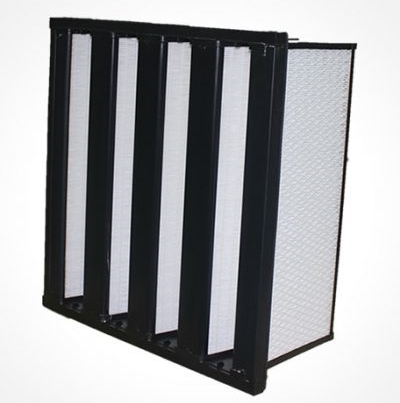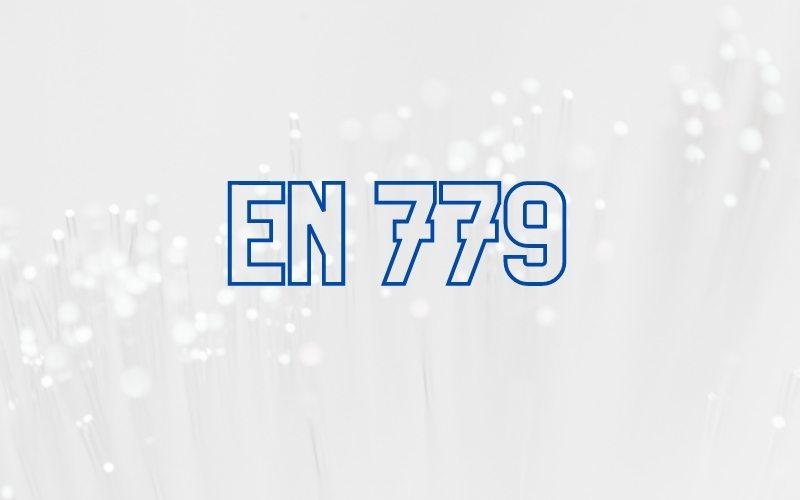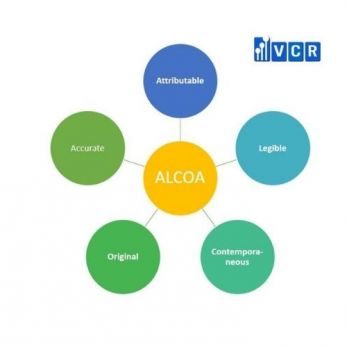EN 779 - Standard for classification of coarse and fine filtration
EN 779 was the most widely used air filtration classification method for over 20 years, until it was replaced in 2018.
What is EN 779?
Method of testing filtration efficiency according to EN 779 standard
- Arrestance efficiency for synthetic dust particles
- Filtration efficiency for 0.4 μm particles using synthetic aerosols
- Pressure difference
- Dust holding capacity for synthetic dust particles (ASHRAE)

EN 779 versions
The EN 779:2012 standard is an updated version of EN 779:2002, introducing additional criteria and considerations for filtration performance. It introduces an innovative criterion to evaluate the efficiency of F7, F8, and F9 filtration: minimum efficiency.
- This new criterion leads to the reclassification of almost all old synthetic fiber filters. This is because synthetic fiber filtration shows very low efficiency in tests after removing the electrostatic filtration effect with an isopropanol treatment. To address this issue, synthetic fiber manufacturers are designing new filter materials that meet the updated requirements for dust filtration efficiency.
- Unlike synthetic fibers, fiberglass is not affected by charge loss and maintains efficiency throughout its lifespan, ensuring compliance with performance limits for the filter's entire operational lifespan.
After EN 779:2012 introduced the minimum performance criteria, the old "fine" filters F5 and F6 were reclassified as "medium" filters M5 and M6.
In addition, the EN 779:2012 standard sets the final pressure drop to promote energy efficiency. The final pressure drop is also understood as the recommended point to replace the filter:
- For pre filters (G), the final pressure drop is 250 Pa.
- For medium (M) and fine filters (F), the final pressure drop is 450 Pa at a specified test volume of 0.944 m/s.

Filter Classification Based on EN779 Standard
The basic criteria used in EN 779 to evaluate coarse and fine filtration are: Average arrestance with synthetic dust (Am) and Average efficiency for 0.4 μm particles (Em).
The EN 779:2002 classification system, which included group F and group G filters, was updated into three groups: group F, group M, and group G filters.
Coarse filters (G filters):
- Filters with an average performance value (Em) of less than 40% for 0.4 μm particles are classified as group G.
- The classification of G filters (G1-G4) is based on the average level of dust resistance (Am).
- These range from G1 (dust resistance 50-65%) to G4 (dust resistance 90%).
Intermediate filters (M filters):
- Filters with average performance values between 40% and 80% for 0.4 μm particles are classified as group M (M5, M6).
- The classification of group M filters is based on their average performance (Em). F5 and F6 filter levels have been renamed to the M5 filter and the M6 filter, with their required parameters remaining unchanged.
- The average performance for M5 is 40% ≤ Em < 60%, and for M6, it is 60% ≤ Em < 80%.
Fine filters (F filters):
- Filters with an average efficiency of 80% or more for 0.4 μm particles are classified as group F (F7-F9).
- The classification is based on their average performance (Em) according to the EN779:2002 standard and their minimum performance during testing (EN779:2012).
- The purification levels range from F7 (80% ≤ Em < 90%, minimum efficiency 35%) to F9 (95% ≤ Em, minimum efficiency 70%).
*Minimum performance: The lowest percentage value during the filter's complete installation cycle.
**Average performance: The average percentage value across three stages of the filter installation cycle:
- Initial effect
- Effectiveness throughout the load process of the test,
- Effectiveness after discharge.
Some Applications of Coarse and Fine Filtration Levels
|
Particle size
|
Example | Filter level | Application |
| Coast dust particle size>10μm |
insects textile and hair sand fly ash spore, pollen cement dust |
G1 | Application in simple daily life (e.g. insect nets for compact machines) |
| G2 | |||
| G3 |
|
||
| G4 | |||
| Fine dust particle size>10μm |
pollen spore cement dust fly ash Bacteria and germs on objects |
M5 | Input filters for fonts that require low cleanliness (e.g. factories, warehouse facilities,...) |
| M5 |
|
||
| M6 | |||
| F7 | |||
|
oil smoke cigarette smoke metal oxide smoke |
F7 |
|
|
| F8 | |||
| F9 |
Summary




















